|
HOME: www.hiltonpond.org |
|||
THIS WEEK at HILTON POND Subscribe for free to our award-winning nature newsletter (Back to Preceding Week; on to Next Week) |
|
SPRING CHILL One nice thing about having a digital weather station at Hilton Pond Center: It gives us an accurate, on-going account of numerous meteorological parameters affect plants and animals at our 11-acre locale. There's no need to check a wall thermometer constantly when we simply go on-line to our personal Weather Underground Web site to see what data have been uploaded at five-minute intervals from the Center station. During the first half of April the the data (see below) showed us the first half of the month was mighty chilly around these parts, with daily lows in the 40s and temperature near freezing (32.4° F) on a rather late date of 10 April. This was a shocker after an unusually warm month of March and did not bode well for early emerging plant buds and insects or for early nesting birds whose eggs risked cooling down and dying during the extended cold period.
All text, maps, charts & photos © Hilton Pond Center To start the month on April Fool's Day 2016 at Hilton Pond Center, we looked out at a ground trap baited with white millet, cracked corn, milo, and sunflower to see we had snared an active little bird that looked very un-sparrow-like (photo above). White tail spots and wing bars, streaked flanks, white line above the eye, pointed black bill, and--oh, yes--a bright yellow throat and upper chest--what could it be but a Yellow-throated Warbler! Although the species doesn't usually eat seeds, this individual may have been after insects attracted to the grain in the trap. Yellow-throated Warblers are one of those few Wood Warblers that actually stop to breed locally after overwintering in the Neotropics; only a half-dozen or so species linger fall through spring in Atlantic and Gulf Coast states. We determined our bird-in-hand was a second-year female, although this is one warbler species in which there isn't much sexual dimorphism. (Adult males typically have darker crowns and heavier side streaking.) In any case, Yellow-throated Warbler was an unusual capture and cause for excitement--just the tenth of its species banded at Hilton Pond in 35 years!
All text, maps, charts & photos © Hilton Pond Center One day in early April we were surprised to find a nearly two-inch-long creature affixed to the shower glass of our master bathroom at Hilton Pond Center. Perhaps coming in from the cold was Cope's Gray Treefrog, Hyla chrysocelis. The frog was hardly camouflaged indoors, but when we took it outside and placed it on the trunk of a Shagbark Hickory it was apparent why this frog is often heard but not seen. When it clung to the tree with big toe pads, the mottled gray of the frog's skin blended perfectly with lichen-covered bark. Interestingly, this is one amphibian that can actually alter its color from gray to dark green depending on substrate, although the change comes quite slowly. The taxonomy of Gray Treefrogs is a matter of some debate because Cope's Gray Treefrog, Hyla chrysocelis, looks exactly like the "plain old" Gray Treefrog H. versicolor, and is distinguishable only by call (shorter and faster in Cope's) and by the number of chromosome's in each frogs' cells (diploidy with 24 chromosomes in Cope's, but tetraploidy with 48 chromosomes in H. versicolor). It's hard enough to hear differences in calls, but chromosomal analysis obviously is not a good field mark for differentiating these two species in the wild. Most herpetologists claim all Gray Treefrogs in the Carolinas are Cope's, but in southern Virginia ranges for the two species overlap. Crossbreeding usually results in tadpole mortality because of the chromosomal difference.
All text, maps, charts & photos © Hilton Pond Center In April, through the kitchen window of the old farmhouse at Hilton Pond Center we can see several sapling trees whose leaves have recently unfolded. One we've learned to identify at quick glance not by leaf shape but by distinctive red bumps appearing on its foliage. These are leaf galls that form every year on our hickory trees where barely macroscopic insects have visited. Several insect galls can appear on hickories, most of them caused by tiny midges or flies that lay eggs on or just beneath the leaf surface. The one in our photo above is the Hickory Leaf Gall, caused by the mini-midge fly Caromyia carye. Such galls do not appear to be a major problem for hickory trees and have only minimal impact on a leaf's ability to photosynthesize.
All text, maps, charts & photos © Hilton Pond Center Insect galls appear when chemicals exuded by the larval insect cause leaf cells to divide abnormally, forming a distinctive structure--in essence a tumor--in which the immature insect lives. The larva eats the abnormal but nutritious cells and after completing its four-stage metamorphosis becomes an adult that emerges though a small exit hole in the gall wall. Curious about the growths on our hickory leaves, we used a sharp blade to cut open a quarter-inch-long gall (above), only to find the insect in question had already departed. Inside was just "frass"--tiny pellets of larval droppings indicating the insect had dined well.
All text, maps, charts & photos © Hilton Pond Center Although hickory trees sport various galls, oak trees seem even more susceptible to forming such abnormal growths. Various oaks, in particular, give rise to various galls--one of the largest being the two-inch diameter Wool Sower Gall (above). This unusual structure--which resembles a Dandelion seed head or a cotton ball with pink spots--is caused by an eighth-inch-long cynipid wasp, Callirhytis semiator, that lays eggs on the stems of White Oak, Quercus alba. Cynipids have complicated life histories that are not well understood; they apparently have a two-part cycle in which one generation lays eggs on oak stems and the next lays on oak leaves.
All text, maps, charts & photos © Hilton Pond Center Recognize this individual bird? Neither did we, never seen it before. But we know its age, sex, and species: Adult male Ruby-throated Hummingbird, Archilochus colubris. Why is his photo here? Because he's the first RTHU of 2016 at Hilton Pond Center, observed on 5 April. Furthermore, we caught him in a trap and later released him as the 5,301st banded ruby-throat at the Center since 1984. Yippee! Let the Hummingbird Wars begin!
All text, maps, charts & photos © Hilton Pond Center The "hard freeze" forecast on the night of 9-10 April never quite hit Hilton Pond Center, with our low dropping "only" to 32.4°F at 6:39 a.m. As things warmed up that morning, bird activity increased greatly, with Yellow-rumped Warblers bathing in our garden pool, American Goldfinches--with a solitary Pine Siskin--attacking the sunflower seed feeders, and a pair of Eastern Bluebirds gathering insects to take back to their nest. Of the Center's 15 or so nest boxes, only one was occupied so far this year by bluebirds, and that box had only three eggs. (Eastern Bluebirds typically have a first clutch of 4-6.) Alas, only one egg hatched, so the parent birds didn't have to work quite as hard to fill the bottomless craw of just one hungry nestling. Even so, on one April day the male was constantly grabbing what appeared to be stink bugs he then took to his mate perched on branches near the nest. We never saw the female go after any insects on her own, but the male faithfully brought tasty morsels to her throughout the day. The two-parent team became a powerful force when they went after an Eastern Gray Squirrel that go too close to their box; diving and swooping and chattering, they had no trouble driving away this potential nest predator. In the photo above--taken through a double-glazed patio door--the much-more-blue male gazes at the blue-gray female with a bug in her bill. Both are banded, the male on his left leg as shown, and the female on her right; these birds are relatively young, having hatched last year when we first caught them. It will be interesting to see if they attempt a second nest after their single chick fledges.
All text, maps, charts & photos © Hilton Pond Center We like to band nestling bluebirds on Day 12 after hatch, so 15 April was the day for banding the chick. We waited for temperatures to warm after lunch and headed toward the nest with banding pliers an a single band in hand. After opening the box we lifted the stubby-tailed chick from the nest, our ears ringing with raspy alarm calls young bluebirds often make in this situation. This sound typically puts parent birds into attack mode, but neither swooped at me in the 30 seconds it took to band the nestling, photograph it, and return it to its nest. The adults' tolerance was a bit of a surprise after seeing the adults attack squirrels that strayed within 20 yards of the box. We might add 15 April is probably the earliest we've EVER banded a nestling Eastern Bluebird; early eggs may have been stimulated by this year's warm March weather, but with our cold April it's not surprising there was a partial nest failure with two eggs not hatching. The good news is plenty of time remains for this bluebird pair to nest a second time--and even thrice--during the current breeding season.
All text, maps, charts & photos © Hilton Pond Center More alarming were the contents of a different nest box, this one containing three unhatched eggs of a Carolina Chickadee. We watched the adults build the hair-lined nest in very early April, after which the female laid three brown-speckled eggs (above) and started incubating. On days after that very nippy 32.4° temperature reading, however, she was nowhere to be seen. It's possible the female perished, but we speculate the relatively frigid weather was simply too cold and the developing embryos died. We watched the untended nest for a week or so and finally removed all nest box contents in the hope the chickadee pair might try again. (No such progress to date.) Alas, this species seldom double-broods in a given year. In spring, bird-loving folks like to put out soft, fluffy materials with which feathered friends can line nests (see photo below). That's probably not a bad idea, with one big caveat: A much better alternative is UNTREATED three-inch strands of animal hair (such as what you might brush from your dog, cat, or farm animal, but only if you haven’t been using flea repellent or similar chemicals); short, washed three-inch strands of human hair from a barber would work as well. If you don't happen to have pets or your own cotton crop, you can order batts of unprocessed RAW cotton and a wire holder for them. (Don't use medicinal cotton balls, which sometimes aren't even cotton.) There's a commercial product called "Hummingbird Helper" (see photo at left) that here at Hilton Pond Center has attracted the attention of Ruby-throated Hummingbirds, Carolina Chickadees, and Eastern Tufted Titmice. If you have a local source of raw cotton, you can offer it to your birds in a spare suet feeder.
All text, maps, charts & photos © Hilton Pond Center As April wildflowers began to blossom at Hilton Pond Center, one of the most visible was the bright yellow Dwarf Cinquefoil, Potentilla canadensis (above, AKA "Five-fingers"), which almost carpets some open areas around the property. It was difficult to find a perfect example of this half-inch flower, however; we suspect those very cold mornings may have damaged the buds before they opened. The various cinquefoils (from the Latin word quinquefolium for "five leaves") are so-named because both foliage and flower are five-parted.
All text, maps, charts & photos © Hilton Pond Center A patch of Oxalis crassipe (above), one of the hardy non-native shamrocks brought in long ago from Europe. Each year, this pinkish-purplish variety (known as "Rosea") sprouts big clumps in a small lawn space in front of the old farmhouse at Hilton Pond Center. Many gardeners view this plant as an invasive weed; we choose to let it be, admiring its intricate inflorescence and perennial persistence.
All text, maps, charts & photos © Hilton Pond Center As much as we appreciate the appearance of Oxalis, it pales compared to our enthusiasm for a Pinxter-flower, Rhododendron periclymenoides (above, formerly R. nudiflorum), that graces our woods at Hilton Pond Center. This native shrub bursts into bloom each spring in the shade of tall hardwoods, extending its ample reproductive structures from the center of five-petaled pink blossoms. This plant is visited by a number of butterfly species and serves as a welcome nectar source for early arriving Ruby-throated Hummingbirds. One interesting note: The shrub sends forth its showy flowers well before any leaves begin to unfold.
All text, maps, charts & photos © Hilton Pond Center On 21 April we finally saw and banded our second Ruby-throated Hummingbird of 2016 at Hilton Pond Center--and our first female of the year. (That's her in the image above.) That first male (mentioned previously) appeared on 5 April; he visited our feeders occasionally, but there's really been a dearth of hummers so far this season. Over the past 32 years we've caught an average of six RTHU by 21 April; during last year's record-setting pace we had banded 36 ruby-throats by this date! Every year is different of course, and like all things in nature Ruby-throated Hummingbird numbers are probably cyclic. The difficult part is assigning cause-and-effect, so when asked to explain "why" this year's numbers are down we have to respond with "We don't know." We also say to keep your feeders fresh and there will be a big up-tick in most RTHU populations starting in July and peaking in August or early September. Incidentally, after we netted, banded, and measured that first female Ruby-throated Hummingbird, we applied a band of bright green non-toxic dye to her lower throat so we can identify her as banded from a distance. (The dye wears off after a few weeks.) Several color marked RTHU have shown up far from Hilton Pond, so if you live north of York SC keep your eyes open this spring for green-throated individuals at your feeder. If you live south, watch out for them this fall. (The dye is much harder to see in adult males with red gorgets.) Please report any such sightings to RESEARCH and also send a photo if at all possible.
All text, maps, charts & photos © Hilton Pond Center In 2016, when at Hilton Pond Center we celebrated 22 April as the 46th anniversary of "Earth Day," we paused to reflect on our responsibility to wisely care for the planet and ALL its inhabitants--flora and fauna great and small. Although this designated observance focuses our thinking, it's far more important to remember that "EVERY day is Earth Day."
All text, maps, charts & photos © Hilton Pond Center Do not fret. There is nothing wrong with your computer. Do not attempt to adjust color settings on your monitor. If you're seeing the above image in black and white it's because it's a photo of a Black-and-white Warbler we netted and banded on 25 April at Hilton Pond Center. Members of the Wood Warbler Family (Parulidae) are among our most eye-pleasing birds, but this aptly named species has to be least colorful of them all. (Even those such as Ovenbird and the waterthrushes have plumage in a warm brown.) Nonetheless, we really like Black-and-white Warblers (alpha code BAWW) and find their appearance to be quite striking. Add to that their nuthatch-like behavior--very long toes and claws enable them to cling to and run along tree trunks and limbs, while heavy bills help them dig out insects hidden in bark crevices--and they can entertain you all day long. Black-and-white Warblers occasionally overwinter in the Carolina Piedmont but ours seem to disappear in fall and are among the first migrants to return in spring. The bird in today's photo is a second-year male with black cheek patches; those on females are much paler.
All text, maps, charts & photos © Hilton Pond Center A female (pale-cheeked, above) Black-and-white Warbler we caught at dusk at the Center on the following day was significant for a couple of reasons. For one, she had a well-developed brood patch--a vascularized, edematous area on her belly devoid of feathers--meaning she is sitting on eggs or chicks and, therefore, a very strong indicator of local breeding. BAWW build nests on or close to the ground under camouflage of dead leaves; alas, I've never been able to find one. The other important thing about this particular warbler: She was the 64,000th bird banded at Hilton Pond Center since 1982--another milestone worthy of "crowing" about. That's a LOT of birds!
All text, maps, charts & photos © Hilton Pond Center Despite running ten mist mist nets for 12 hours on 26 April, things were very slow at Hilton Pond Center's banding table. (Sunny days and wind-blown nets don't help.) Not counting recaptures of resident birds, we caught one Black-and-white Warbler, one Gray Catbird, a female Brown-headed Cowbird, and a Carolina Wren--distinguishable as a recent fledgling because its undertail covert feathers were still lacking bars (see photo above). The surprise of the day was a second-year female Ruby-crowned Kinglet that by now "should be" on her way to breeding grounds in boreal Canada. (Even so, our local late date for a RCKI is 8 May.) Things ain't like they used to be with regard to big numbers during spring migration. Interesting recaptures on the 26th included a second-year Yellow-throated Warbler and a rather old seventh-year Eastern Tufted Titmouse. Both were females with well-developed brood patches.
All text, maps, charts & photos © Hilton Pond Center On 29 April we trapped and banded the first fledgling House Finch (HOFI) of the year for Hilton Pond Center. Three things worth mentioning: 1) The immature HOFI was all brown, but at this stage males have not yet acquired any red coloration so we sexed it as "unknown"; 2) Its tail showed several "fault bars," poorly formed places in feather vanes that indicate the bird had been stressed as a nestling while bringing in its rectrices, AKA tail feathers. (We suspect this was related to several unusually cold days during the first half of April); and, 3) The fledgling finch had a little "plume" behind each eye (see our file photo above)--a fairly common attribute of young songbirds. We speculate these weakly structured feathers--which soon wear off--indicate to adults the plume-bearer is a young bird in need of parental care, i.e., food.
All text, maps, charts & photos © Hilton Pond Center We closed out the chilly month of April 2016 with the arrival of Costa Rican friend and research colleague Ernesto M. Carman, making his annual visit to Hilton Pond prior to our upcoming week as presenters and guides at the New River Birding and Nature Festival in Fayette County WV. It's always fun to host Ernesto on our own turf after working with him in his own country during the winter on our Ruby-throated Hummingbird studies. Shortly after picking him up at the Charlotte airport we were walking the trails around Hilton Pond Center, our first natural history encounter being a pile of feral Rock Pigeon feathers (above)--undoubtedly left behind by a hungry Cooper's Hawk.
All text, maps, charts & photos © Hilton Pond Center Ernesto's second nature experience was getting up close and personal with a sleek and shiny snake (above) that also was exploring the trails at Hilton Pond Center. This three--foot serpent undoubtedly had just shed its winter skin and was slithering about in pursuit of small mammals, birds, or eggs. Formerly classified as the Black Ratsnake, Elaphe obsoleta, this eastern U.S. species is now known confusingly as Western Ratsnake, Pantherophis obsoletus, based on DNA studies. This differentiates it from the Eastern Ratsnake, P. alleghaniensis (found in southeastern Canada), and the Central or Gray Ratsnake, P. spiloides, whose range overlaps the other two species. If you find all this perplexing, so do professional herpetologists. Thus, we told our tico friend 'Nesto it's probably okay to call what we saw a "Black Ratsnake." Almost everyone will know what the heck species he's talking about.
All text, maps, charts & photos © Hilton Pond Center And a final note about April 2016. Despite chilly weather during the first half--or maybe because of it--our resident Carolina Chickadee (CACH, above) population was active enough to get trapped or mist netted quite frequently. We can't tell how many CACH visit the feeders at Hilton Pond Center by just looking out the window, but banding and recapturing them gives a much more accurate tally. To be honest, we were a bit surprised to recapture 14 different chickadees during the month--including a venerable female we banded as an adult in May 2011; this makes her more than six years old. (Scroll down for complete lists of all birds banded and recaptured during April.) All text, maps, charts & photos © Hilton Pond Center 
Checks can be sent to Hilton Pond Center at: All contributions are tax-deductible on your |
|---|
|
"This Week at Hilton Pond" is written and photographed by Bill Hilton Jr., executive director of Hilton Pond Center for Piedmont Natural History
|
|
|
Please refer "This Week at Hilton Pond" to others by clicking on this button: |
Comments or questions about this week's installment? Send an E-mail to INFO. (Be sure to scroll down for a tally of birds banded/recaptured during the period, plus other nature notes.) |

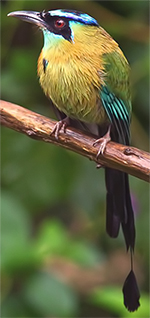 WHEN IT'S DREARY AND COLD
WHEN IT'S DREARY AND COLD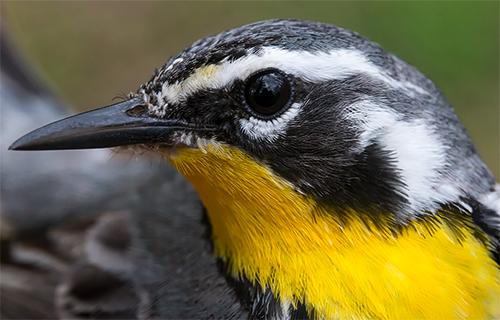
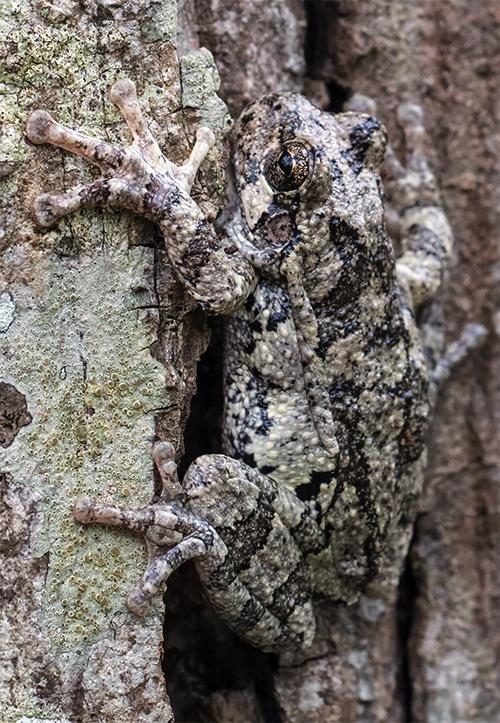
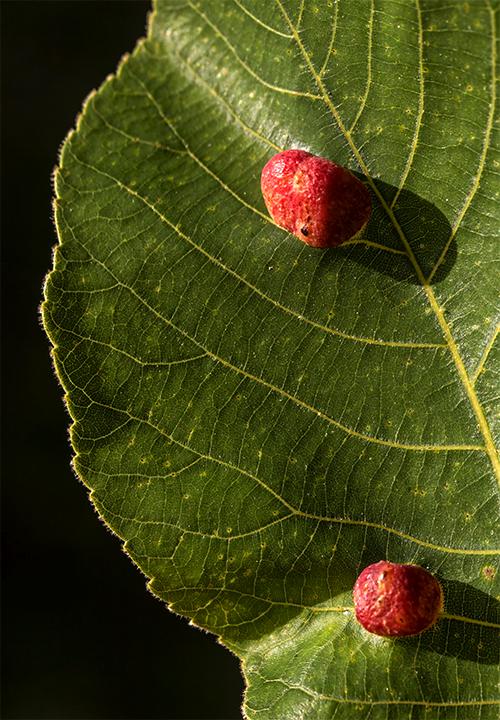
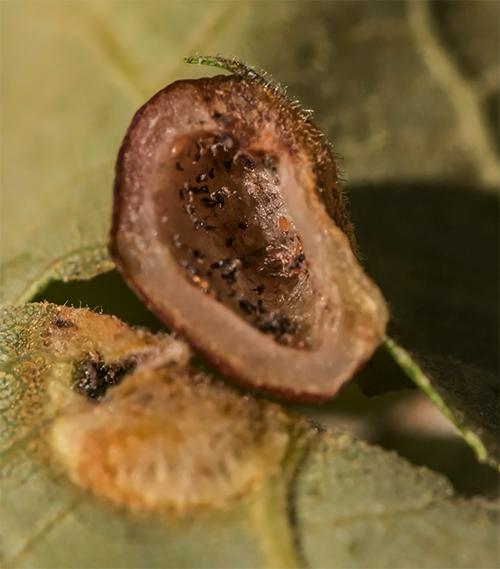
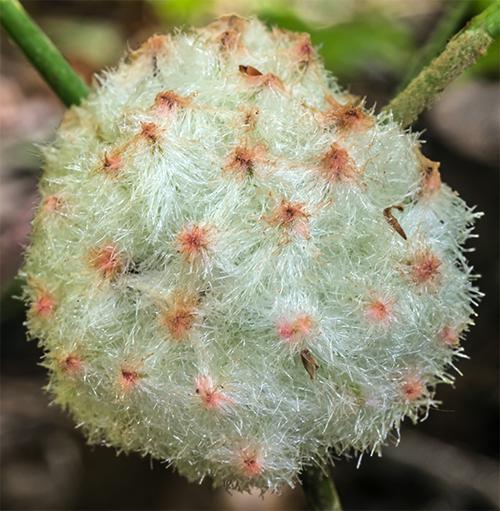
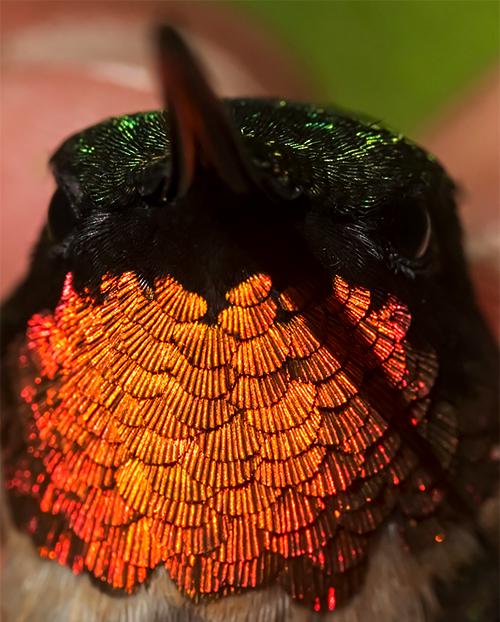
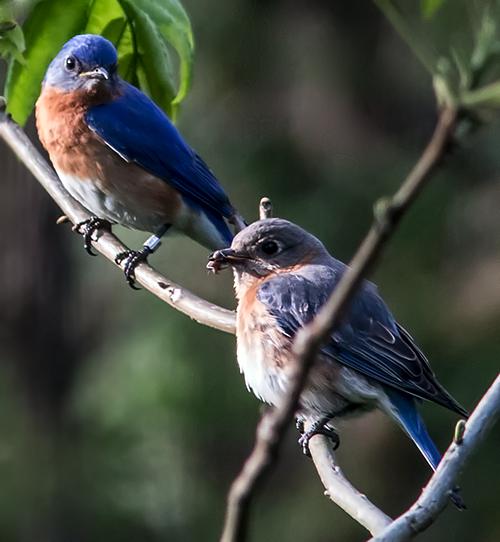
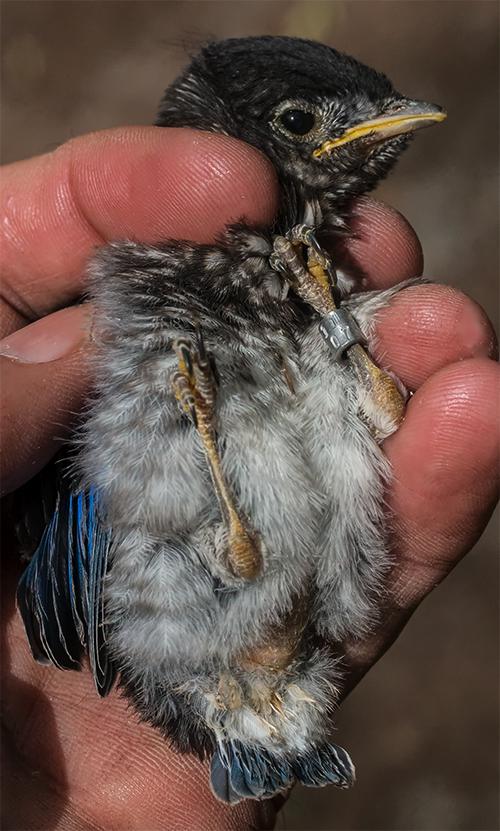
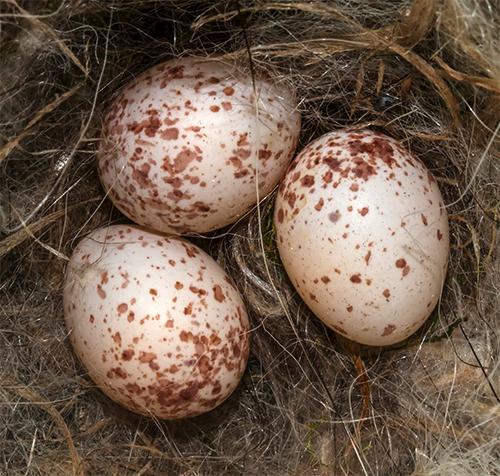
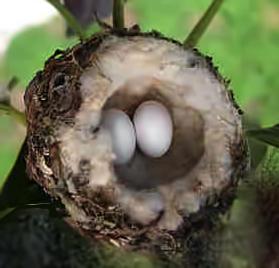 Please do NOT offer dryer or washer lint as nesting material. Most of it is a synthetic that HOLDS water when wet rather than allowing it to drain.
Please do NOT offer dryer or washer lint as nesting material. Most of it is a synthetic that HOLDS water when wet rather than allowing it to drain. 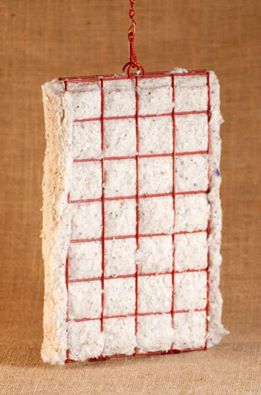 You can also offer RAW
You can also offer RAW 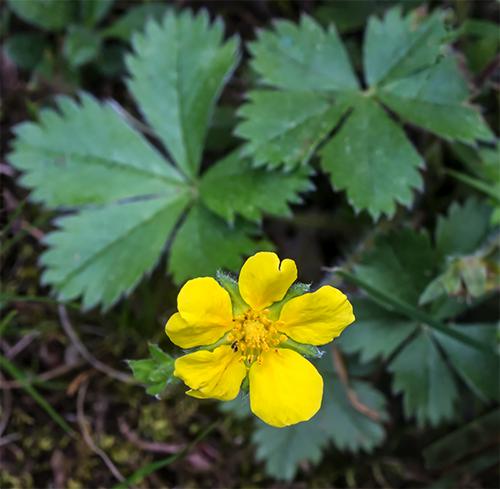
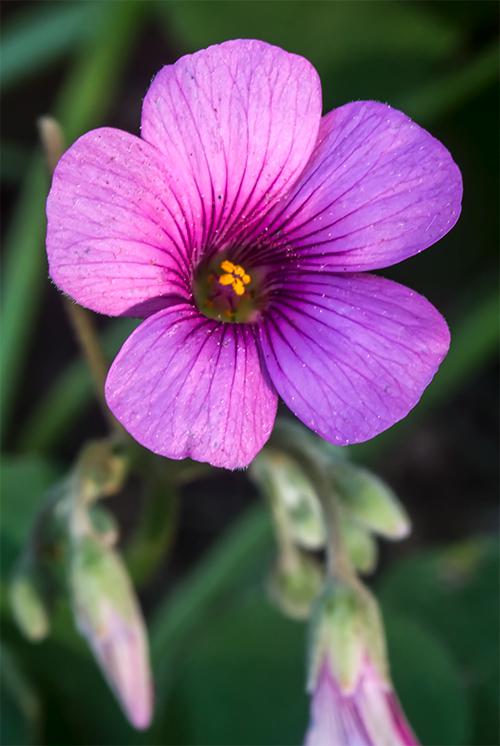
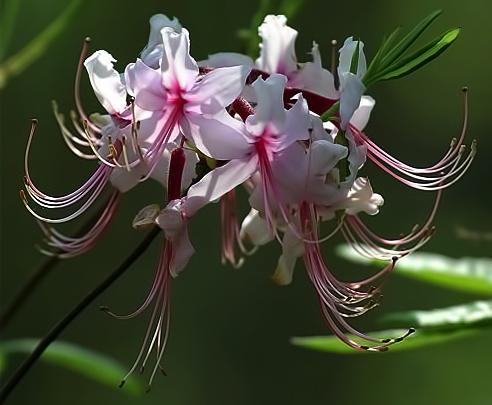
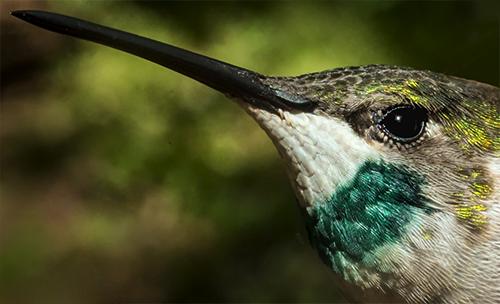

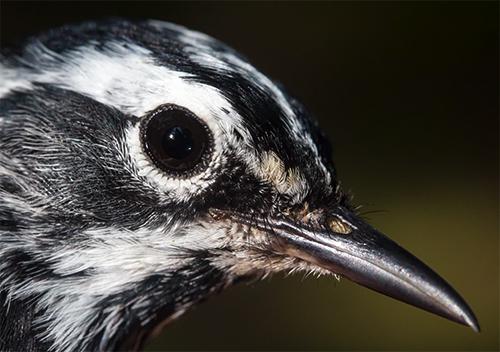
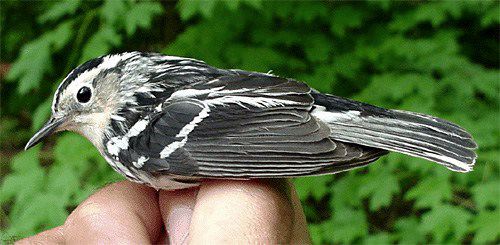
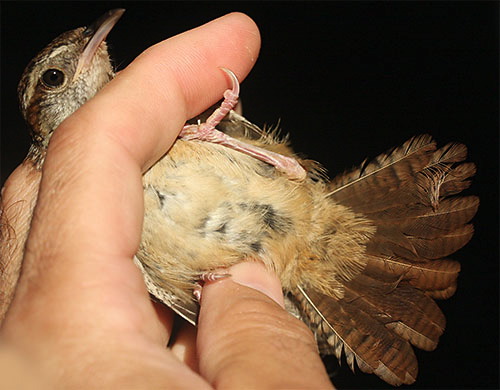
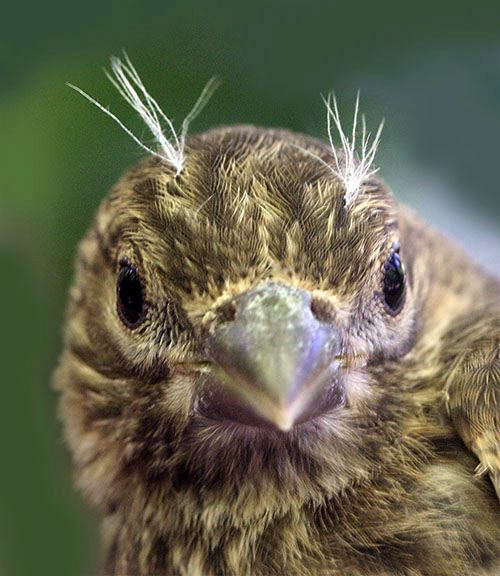
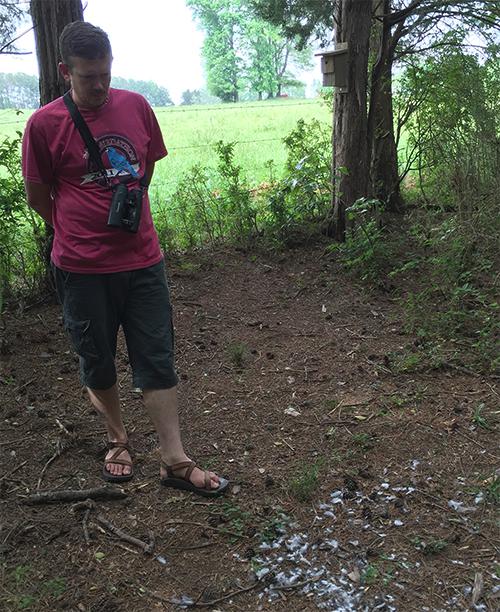
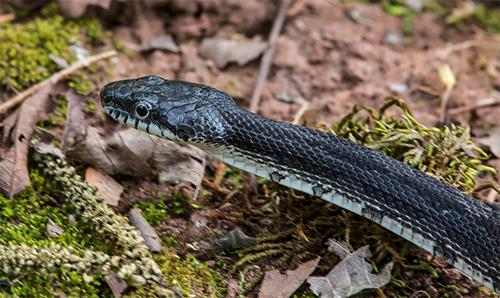
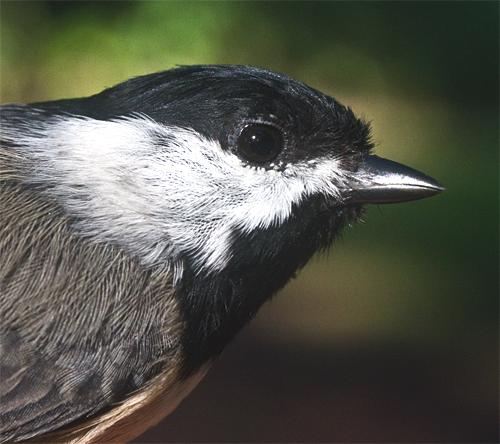








 Please report your spring, summer &
Please report your spring, summer &